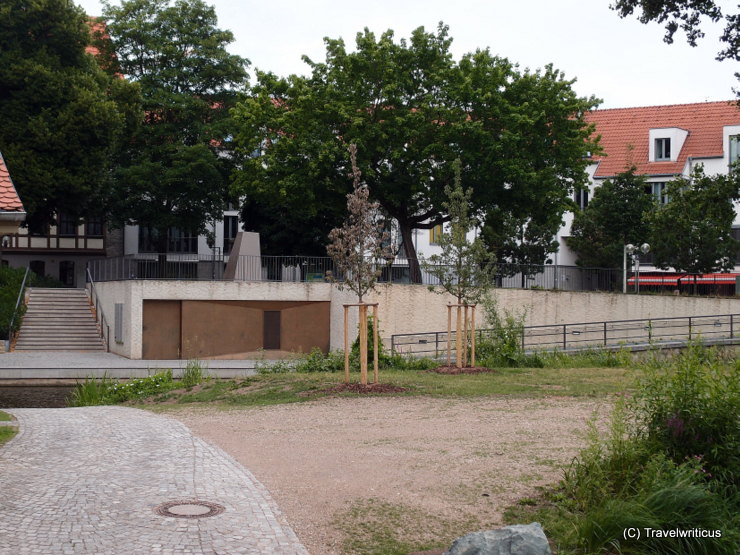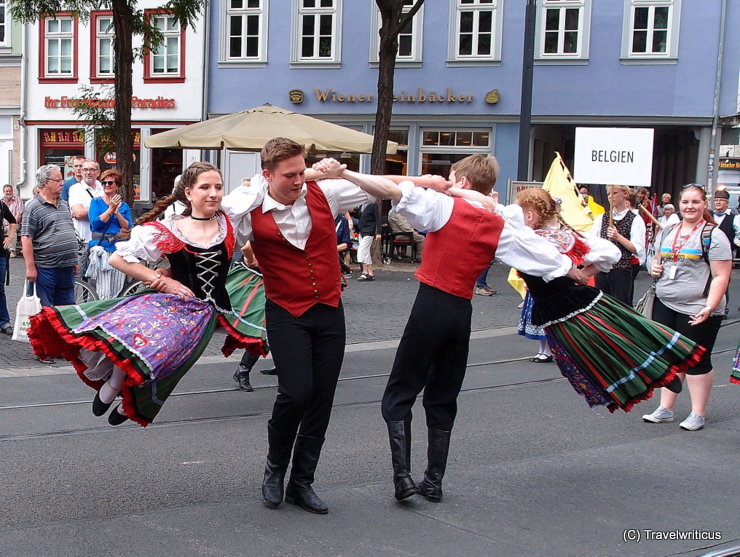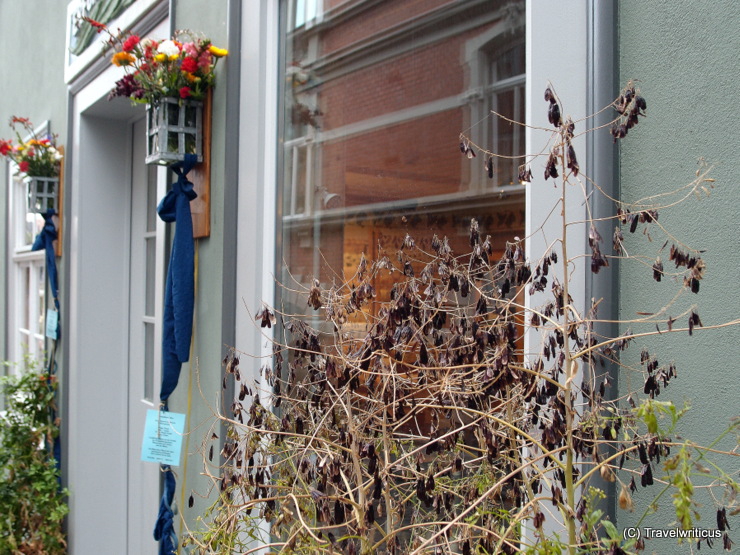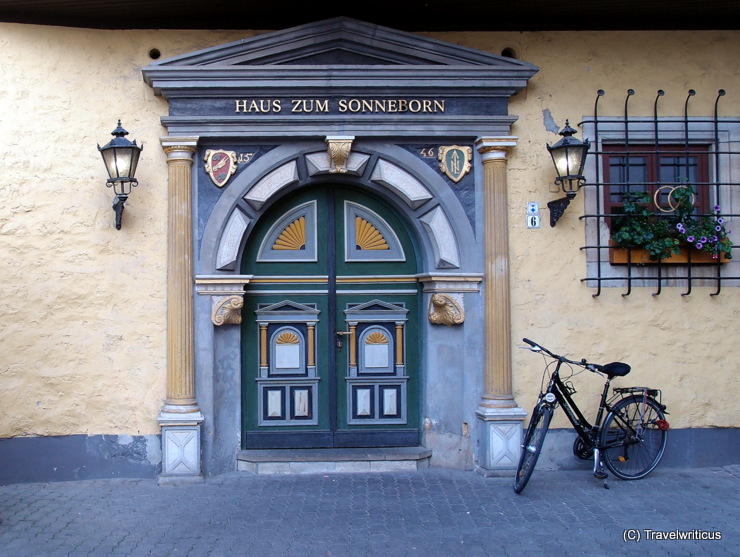
A traditional Thuringian dish are beef-rouladen served with red cabbage, Thuringian dumblings, and some gravy for pouring over the meat. The Thuringian dumblings (Thüringer Klöße) are made of potatoes generally filled with croutons.
You only see what you know (Goethe)

A traditional Thuringian dish are beef-rouladen served with red cabbage, Thuringian dumblings, and some gravy for pouring over the meat. The Thuringian dumblings (Thüringer Klöße) are made of potatoes generally filled with croutons.

Next to the famous bridge with 32 inhabited houses (Krämerbrücke) and not far away from the Old Synagogue (11th century), you can find a mikveh (Mikwe) dating back to the 13th century. The pic above shows the modern museum building covering the old mikveh.

Impression from the ‘Danetzare’ folk festival in Erfurt. The pic was taken at the parade of all participating groups through the streets of the city.

At the shop ‘Erfurter Blau‘ (Erfurt Blue) I learned more about the history of the trade in Dyer’s Woad. The prosperity of Erfurt is largely owing to the fact that this city was a big trading place for woad also known as Isatis tinctoria.

Peering through gates often gives interesting insights. This inner yard in Erfurt made me think to live in a different period or to be on a stage. Actually the Kunsthof Pianola is a venue with medieval touch not far away from the center of the city.

In 1970 West German politician Willy Brandt and East German politician Willi Stoph met in Erfurt. Willy Brandt stayed at Hotel Erfurter Hof in a room behind these windows. The first visit of a West German statesman in the GDR had a big impact into the memories of local people.

Behind this door you will find the registry office and a venue for marriages. The building is a reconstruction but the portal dates back to Renaissance period.